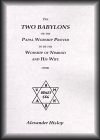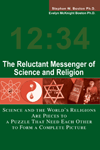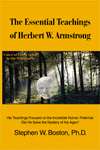
Introduction
Preface Second Ed.
Preface Third Ed.
Note by the Editor
The Two Systems
Trinity in Unity
Mother and Child
The Child in Assyria
The Child in Egypt
The Child in Greece
Death of the Child
Deification of the Child
Mother of the Child
Christmas
Easter
Nativity of John
Feast of thr Assumption
Baptismal Regeneration
Justification by Works
Sacrifice of the Mass
Extreme Unction
Purgatory and Prayers for the Dead.
Idol Processions
Relic Worship.
Clothing and Crowning of Images.
The Rosary
Lamps & Wax-candles
Sign of the Cross
Sovereign Pontiff
Priests, Monks, and Nuns.
Great Red Dragon
Beast From the Sea
Beast from the Earth
Image of the Beast
Number of the Beast
Invisible Head of the Papacy
Woman with Golden Cup
Hebrew Chronology
Shing Moo and Ma Tsoopo of China.
Ala-Mahozim
Meaning of the name Centaurus
Olenos, the Sin-Bearer
Identification of Rhea or Cybele and Venus
Virgin Mother of Paganism
Goddess Mother as a Habitation.
Meaning of the name Astarte.
Oannes and Souro
The Identity of the Scandinavian Odin and Adon of Babylon
Stripping of the Clothes of the Initiated in the Mysteries
Zoroaster, the Head of the Fire-Worshippers
Story of Phaethon
Roman Imperial Standard of the Dragon of Symbol of Fire-worship
The Slaying of the Witness
Attes, the Sinner
Click here for The Reluctant Messenger (Host Site)
THE TWO BABYLONS
"And upon her forehead was a name written, MYSTERY, BABYLON THE GREAT, THE MOTHER OF HARLOTS AND ABOMINATIONS OF THE EARTH." --Rev. xvii. 5.
The Two Babylons - INTRODUCTION.
There is this great difference between the works of men and the works of God, that the same minute and searching investigation, which displays the defects and imperfections of the one, brings out also the beauties of the other. If the most finely polished needle on which the art of man has been expended be subjected to a microscope, many inequalities, much roughness and clumsiness, will be seen. But if the microscope be brought to bear on the flowers of the field, no such result appears. Instead of their beauty diminishing, new beauties and still more delicate, and have escaped the naked eye, are forthwith discovered; beauties that make us appreciate, in a way which otherwise we could have had little conception of, the full force of the Lord's saying, "Consider the lilies of the field, how they grow; they toil not, neither do they spin: and yet I say unto you, That even Solomon, in all his glory, was not arrayed like one of these." The same law appears also in comparing the Word of God and the most finished productions of men. There are spots and blemishes in the most admired productions of human genius. But the more the Scriptures are searched, the more minutely they are studied, the more their perfection appears; new beauties are brought into light every day; and the discoveries of science, the researches of the learned, and the labours of infidels, all alike conspire to illustrate the wonderful harmony of all the parts, and the Divine beauty that clothes the whole.
If this be the case with Scripture in general, it is especially the case with prophetic Scripture. As every spoke in the wheel of Providence revolves, the prophetic symbols start into still more bold and beautiful relief. This is very strikingly the case with the prophetic language that forms the groundwork and corner-stone of the present work. There never has been any difficulty in the mind of any enlightened Protestant in identifying the woman "sitting on seven mountains," and having on her forehead the name written, "Mystery, Babylon the Great," with the Roman apostacy. "No other city in the world has ever been celebrated, as the city of Rome has, for its situation on seven hills. Pagan poets and orators, who had no thought of elucidating prophecy, have alike characterised it as 'the seven hilled city.'" Thus Virgil refers to it: "Rome has both become the most beautiful (city) in the world, and alone has surrounded for herself seven heights with a wall." * Propertius, in the same strain, speaks of it (only adding another trait, which completes the Apocalypt ic picture) as "The lofty city on seven hills, which governs the whole world." * Its "governing the whole world" is just the counterpart of the Divine statement--"which reigneth over the kings of the earth" (Rev. xvii. 18) To call Rome the city "of the seven hills" was by its citizens held to be as descriptive as to call it by its own proper name. Hence Horace speaks of it by reference to its seven hills alone, when he addresses, "The gods who have set their affections on the seven hills." * Martial, in lik e manner, speaks of "The seven dominating mountains." * In times long subsequent, the same kind of language was in current use; for when Symmachus, the prefect of the city, and the last acting Pagan Pontifex Maximus, as the Imperial substitute, introduces by letter one friend of his to another, he calls him "D septem montibus virum"--"a man from the seven mountains," meaning thereby, as the commentators interpret it, "Civem Romanum," "A Roman Citizen." * Now, while this characteristic of Rome has ever been well marked and defined, it has always been easy to show, that the Church which has its seat and headquarters on the seven hills of Rome might most appropriately be called "Babylon," inasmuch as it is the chief seat of idolatry under the New Testament, as the ancient Babylon was the chief seat of idolatry under the Old. But recent discoveries in Assyria, taken in connection with the previously well-known but ill-understood history and mythology of the ancient world, demonstrate that there is a vast deal mor e significance in the name Babylon the Great than this. It has been known all along that Popery was baptised Paganism; but God is now making it manifest, that the Paganism which Rome has baptised is, in all its essential elements, the very Paganism which prevailed in the ancient literal Babylon, when Jehovah opened before Cyrus the two-leaved gates of brass, and cut in sunder the bars of iron.
That new and unexpected light, in some way or other, should be cast, about this very period, on the Church of the grand Apostacy, the very language and symbols of the Apocalypse might have prepared us to anticipate. In the Apocalypse might have prepared us to anticipate. In the Apocalyptic visions, it is just before the judgment upon her that, for the first time, John sees the
Apostate Church with the name Babylon the Great "written upon her forehead" (Rev. xvii.5). What means the writing of that name "on the forehead"? Does it not naturally indicate that, just before judgment overtakes, her real character was to be so thoroughly developed, that everyone who has eyes to see, who has the least spiritual discernment, would be compelled, as it were, on ocular demonstration, to recognise the wonderful fitness of the title which the Spirit of God had affixed to her. Her judgment is no w evidently hastening on; and just as it approaches, the Providence of God, conspiring with the Word of God, by light pouring in from all quarters, makes it more and more evident that Rome is in very deed the Babylon of the Apocalypse; that the essential character of her system, the grand objects of her worship, her festivals, her doctrine and discipline, her rites and ceremonies, her priesthood and their orders, have all been derived from ancient Babylon; and, finally, that the Pope himself is truly and pr operly the lineal representative of Belshazzar. In the warfare that has been waged against the domineering pretensions of Rome , it has too often been counted enough merely to meet and set aside her presumptuous boast, that she is the mother and mistress of all churches--the one Catholic Church, out of whose pale there is no salvation. If ever there was excuse for such a mode of dealing with her, that excuse will hold no longer. If the position I have laid down can be maintained, she must be stripped of the name of a Christian Church altogether; for if it was a Church of Christ that was convened on that night, when the pontiff-king of Babylon, in the midst of his thousand lords, "praised the gods of gold, and of solver, and of wood, and of stone" (Dan. v.4), then the Church of Rome is entitled to the name of a Christian Church; but not otherwise. This to some, no doubt, will appear a very startling position; but it is one which it is the object of this work to establish; and let the reader judge for himself, whether I do not bring ample evidence to substantiate my position.
Previous | Next

or The Papal Worship Proved to be the Worship of Nimrod and His Wife
$3.99 Kindle eBook
Buy from Amazon.com
The Essential Teachings of Herbert W. Armstrong
His Teachings Focused on The Incredible Human Potential. Did He Solve the Mystery of the Ages?
New Book about HWA's Teachings. Recommended!

